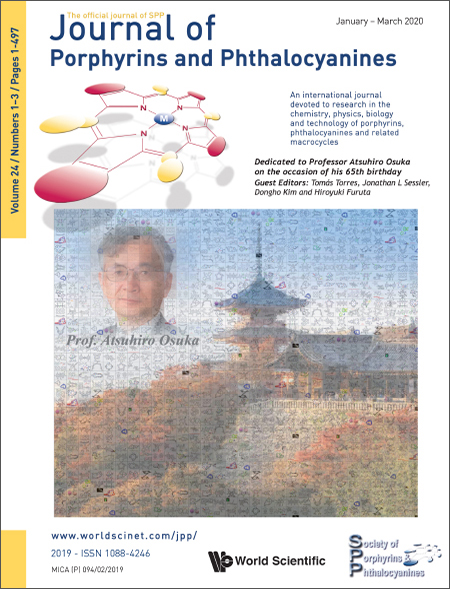Quinoline-annulated porphyrin platinum complexes as NIR emitters
Abstract
The platinum(II) complexes of known quinoline-annulated porphyrins were prepared and spectroscopically characterized. Their optical properties (UV-vis absorption and phosphorescence spectra and phosphorescence lifetimes) were recorded and contrasted against their 2,3-dioxoporphyrin precursor platinum(II) complex. The absorbance and emission spectra (in EtOH glass at 77 K) of the quinoline-annulated porphyrins fall within the NIR optical window of tissue, ranging, depending on the derivative, between 950 and 1200 nm. The much red-shifted optical spectra, when compared to their non-quinoline-annulated precursors, are attributed to the -extension and conformational non-planarity that the annulation causes. The emission yields of the mono-quinoline-annulated derivatives are too low and their lifetimes too short to be practical emitters, but the bis-annulated derivative possesses a practical lifetime and emission yield, suggesting its further exploration, particularly since the methodology toward the solubilization of the quinoline-annulated porphyrins in biological media through derivatization is known.

Dedicated to Professor Atsuhiro Osuka on the occasion of his 65th birthday.
Handbook of Porphyrin Science now available in 46 volumes


